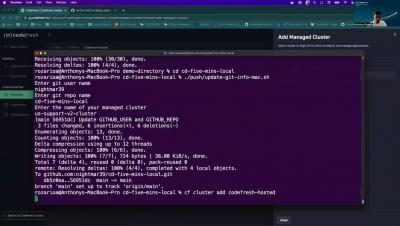Operations | Monitoring | ITSM | DevOps | Cloud
CI CD
The latest News and Information on Continuous Integration and Development, and related technologies.
What is a self-hosted runner?
Why You Should Choose Argo CD for GitOps
Many organizations that have already implemented a DevOps culture are looking to further accelerate their development process by adopting GitOps practices in their environments. There is a lot to take into consideration when planning out your GitOps strategy, and you can read more about it at this Codefresh learning center about adopting GitOps.
How Sleuth measures Change Lead Time
How Sleuth measures Change Failure Rate
How Sleuth measures Mean Time to Recovery (MTTR)
Pre- and post-deployment testing methodologies for CI/CD
Your team has worked hard on a software product for months, and it’s finally ready to release to your users! But then the worst-case scenario happens: a wide release soon indicates that the software is plagued with bugs and performance issues, resulting in poor reviews and widespread user dissatisfaction.











